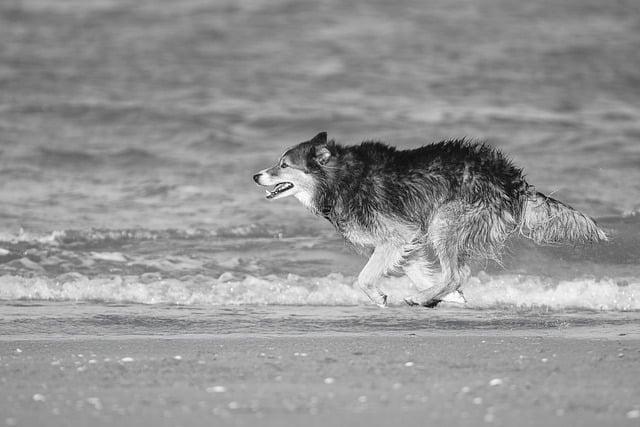Once, a devoted dog owner named Sarah decided to feed her golden retriever, Max, just once a day. Initially, Max seemed fine, but over time, he became lethargic and disinterested in play. Concerned, Sarah consulted her vet, who explained that dogs thrive on regular meals for energy and digestive health. The vet recommended splitting Max’s food into two meals. After a week, Max was back to his playful self, proving that feeding your dog once a day might not be the best choice. Regular meals ensure their happiness and well-being.
Contents
- Understanding Your Dogs Nutritional Needs
- The Benefits and Drawbacks of Once-a-Day Feeding
- How to Transition Your Dog to a Once-a-Day Feeding Schedule
- Expert Recommendations for Maintaining a Balanced Diet with Once-a-Day Feeding
- Q&A
Understanding Your Dogs Nutritional Needs
When considering your dog’s feeding schedule, it’s crucial to understand their unique nutritional needs. Dogs, like humans, require a balanced diet that includes proteins, fats, carbohydrates, vitamins, and minerals. These nutrients play a vital role in maintaining their overall health, energy levels, and well-being. A single meal a day may not provide the necessary nutrients in the right proportions, potentially leading to deficiencies or imbalances.
Feeding your dog once a day can be suitable for some adult dogs, particularly those that are less active or have specific dietary requirements. However, it’s essential to ensure that the meal is nutrient-dense and meets their caloric needs. Consider the following factors when determining if this feeding schedule is appropriate:
- Age: Puppies and young dogs typically require more frequent meals to support their growth and development.
- Activity Level: Active dogs may benefit from multiple meals to maintain energy levels throughout the day.
- Health Conditions: Certain medical conditions may necessitate a more frequent feeding schedule.
Moreover, the timing and quality of the food you provide are equally important. A single meal should be well-balanced and tailored to your dog’s specific needs. Look for high-quality dog food that lists real meat as the first ingredient and is free from fillers and artificial additives. Additionally, consider incorporating fresh fruits and vegetables to enhance their diet and provide essential nutrients.
Lastly, always monitor your dog’s weight and overall health when adjusting their feeding schedule. Regular vet check-ups can help ensure that your dog is thriving on their diet. If you notice any changes in their behavior, energy levels, or weight, it may be time to reassess their feeding routine. Remember, a well-fed dog is a happy dog, and understanding their nutritional needs is key to providing them with a long, healthy life.
The Benefits and Drawbacks of Once-a-Day Feeding
Feeding your dog once a day can offer several advantages that may align with your lifestyle and your pet’s needs. One of the primary benefits is the convenience it provides for busy pet owners. With a single feeding time, you can streamline your daily routine, ensuring that you have more time for other responsibilities or activities. Additionally, many dogs adapt well to this schedule, which can lead to a more predictable routine for both you and your furry friend.
Another significant advantage is the potential for improved digestion. Some dogs may thrive on a once-a-day feeding schedule, as it allows their digestive systems to process food more efficiently. This can lead to fewer instances of bloating or gastrointestinal upset, particularly in breeds that are prone to these issues. Moreover, a single meal can encourage dogs to eat more slowly, reducing the risk of gulping down food too quickly, which can lead to further digestive problems.
However, there are also drawbacks to consider when adopting a once-a-day feeding regimen. One concern is the risk of overeating. If a dog is accustomed to eating multiple times a day, they may feel hungrier and consume their entire meal too quickly, leading to potential weight gain. Additionally, some dogs may experience fluctuations in energy levels throughout the day, which can affect their mood and behavior. This inconsistency can be particularly challenging for active breeds that require sustained energy levels for play and exercise.
Lastly, it’s essential to recognize that not all dogs are suited for a once-a-day feeding schedule. Puppies, for example, typically require more frequent meals to support their rapid growth and energy needs. Older dogs or those with specific health conditions may also benefit from multiple smaller meals throughout the day to maintain stable blood sugar levels. Therefore, it’s crucial to assess your dog’s individual needs and consult with a veterinarian before making any significant changes to their feeding routine.
How to Transition Your Dog to a Once-a-Day Feeding Schedule
Transitioning your dog to a once-a-day feeding schedule requires a thoughtful approach to ensure their health and well-being. Start by assessing your dog’s current feeding routine and overall health. Consult with your veterinarian to determine if a once-a-day feeding is appropriate for your dog’s age, breed, and activity level. Once you have the green light, you can begin the transition process.
Begin by gradually reducing the number of meals your dog receives each day. For instance, if your dog is currently eating twice a day, start by eliminating one of those meals. Instead of abruptly changing their feeding schedule, consider the following steps:
- Reduce the portion size of each meal slightly.
- Introduce a longer gap between meals, gradually increasing the time until you reach a 24-hour cycle.
- Monitor your dog’s behavior and appetite during this transition.
During this period, it’s essential to maintain a consistent feeding time each day. Dogs thrive on routine, and establishing a specific time for their single daily meal can help them adjust more easily. Make sure to provide a balanced and nutritious meal that meets their dietary needs. This will not only keep them satisfied but also ensure they receive the necessary nutrients in one sitting.
Lastly, pay close attention to your dog’s response to the new feeding schedule. Look for signs of hunger or discomfort, and be prepared to make adjustments if necessary. Some dogs may take longer to adapt than others. If your dog seems overly hungry or anxious, consider extending the transition period or consulting your veterinarian for further guidance. Remember, the goal is to create a feeding routine that promotes your dog’s health and happiness.
Expert Recommendations for Maintaining a Balanced Diet with Once-a-Day Feeding
Feeding your dog once a day can be a practical approach, but it requires careful planning to ensure your pet receives all the necessary nutrients. **Consulting with a veterinarian** is crucial to tailor a diet that meets your dog’s specific needs, considering factors such as age, breed, weight, and activity level. A professional can help you determine the right portion sizes and recommend high-quality dog food that provides balanced nutrition.
When adopting a once-a-day feeding schedule, it’s essential to focus on the **quality of the food**. Look for dog foods that list meat as the first ingredient and contain a balance of proteins, fats, and carbohydrates. Additionally, consider incorporating **fresh fruits and vegetables** into your dog’s diet, as they can provide essential vitamins and minerals. Foods like carrots, blueberries, and sweet potatoes can be great additions that enhance both flavor and nutrition.
To prevent your dog from feeling overly hungry or anxious, consider establishing a **consistent feeding routine**. Feeding at the same time each day can help regulate your dog’s appetite and digestive system. Moreover, ensure that your dog has access to fresh water at all times, as hydration is just as important as nutrition. This routine can also foster a sense of security and predictability for your pet.
Lastly, monitor your dog’s weight and overall health closely. Regular **check-ups with your veterinarian** will help you assess whether the once-a-day feeding schedule is working effectively. Be attentive to any changes in your dog’s behavior, energy levels, or coat condition, as these can indicate whether adjustments are needed in their diet. By staying proactive and responsive, you can maintain your dog’s health and well-being while adhering to a once-a-day feeding regimen.
Q&A
-
Is it safe to feed my dog once a day?
Feeding your dog once a day can be safe for some dogs, particularly adult dogs of larger breeds. However, it’s essential to monitor their health and behavior. If your dog shows signs of hunger or discomfort, consider splitting their meals into two or more servings.
-
What are the benefits of feeding my dog once a day?
Feeding once a day can help establish a routine, which many dogs thrive on. It can also aid in weight management and digestion for some dogs, as it allows their digestive system to process food more efficiently without constant interruptions.
-
Are there any risks associated with feeding my dog once a day?
Yes, there are potential risks. Some dogs may experience gastrointestinal issues, such as bloating or vomiting, especially if they eat too quickly. Additionally, dogs with specific health conditions may require more frequent meals to maintain their energy levels and overall health.
-
How can I tell if my dog is getting enough food?
Monitor your dog’s weight, energy levels, and overall health. A healthy dog should have a shiny coat, clear eyes, and a good body condition score. If you have concerns about their diet or weight, consult your veterinarian for personalized advice.
while feeding your dog once a day may work for some, it’s essential to consider your pet’s individual needs. Consult with your veterinarian to ensure your furry friend thrives on a feeding schedule that promotes optimal health and happiness.




